In my recent search for affordable office chairs on Amazon, I took a chance on five chairs priced under $300, hoping to discover another hidden gem like we did with the Ticova. While many budget chairs on Amazon are often disappointing, every now and then, we come across a real treasure. Our first find was the Clatina Mellet and then the Ticova. We hadn’t found any office chairs in a long time that we felt was better until we discovered the Colamy Atlas.
Full Disclaimer: We are an office furniture dealer and sell some of the products we review. To learn more about the products we sell, our review process and why you can trust us, please visit: Why we’re different. Who is BTOD.com and The Breakroom Blog?
Colamy Atlas Links
- Strong Build
- Comfortable Seat
- Backrest Support
- Headrest Highlights
- Armrest Appreciation
- Relaxing Recline
1. Strong Build
What stands out the most for me when comparing the Ticova and the Atlas is the build quality. The Atlas, in particular, is just a much better built chair. This is a pretty big deal considering that the build quality is a weak point for the Ticova. This is the case for most chairs under $300.

The Colamy has managed to put together a well-built chair in the same price range. The standout feature for me was how solid the chair was when I first moved it to my desk. Most chairs in this price range tend to be shaky, with parts rattling around and not feeling solid. The Atlas goes against what you would expect. It feels substantial and well put together.
Next, the components are a noticeable upgrade to chairs like the Ticova. This is most evident with basic components like the wheels and base. The Ticova’s wheels are small, cheap, and not visually appealing. The base is made up of 6 different parts so that they can make the box smaller to save on shipping. This is very common with these cheap chairs. The Atlas on the other hand, features large wheels that have a dual purpose and resemble those found on high-end ergonomic chairs.
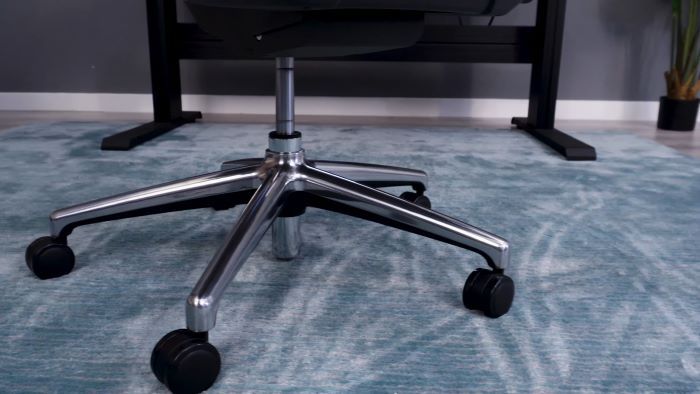
They also went with a heavy-duty base that is aluminum and nylon, forming a single sturdy piece. This theme continues throughout the rest of the chair. The armrest frame, mesh quality and the technology used to adjust the chair are noticeably better on the Atlas. I can confidently say that this is the most well-built chair I have seen for under $300.
2. Comfortable Seat
Moving onto my thoughts on the seat. While a solid build was a fantastic start for the Atlas, comfort was equally important. No matter how well built a chair is, it has to be comfortable. The seat is the first thing I always focus on when I sit down because it’s the first thing that I feel. I really like the seat on the Atlas. The adjustments are impressive as well. The height range is generous, and it goes quite low, making it a nice option for shorter people. What stands out to me is the seat depth adjustment, the quality is amazing and most chairs in this price range don’t even have this feature.
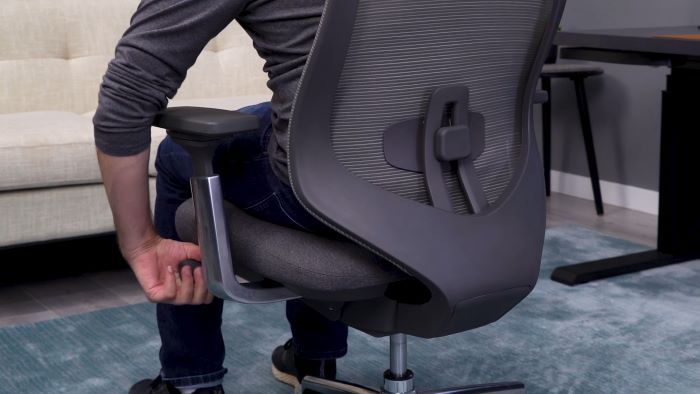
Featuring an adjustment dial similar to the Steelcase Gesture, a chair that sells for around 1500 bucks, the Atlas offers a user-friendly experience. The dial is super easy to use which is amazing because seat depth can be a hassle, even on more expensive chairs. Not only does the Atlas have seat depth adjustment, but it also has one of the best adjustment systems I have seen on any chair at any price.

Along with appreciating the adjustments, I also like the cushion. It has a good balance with its thickness, offering support without being too soft to the point of sinking. The Atlas cushion feels sturdy and comfortable during long periods of use. My only complaint would be that I’d prefer it didn’t have the slanted edges on the sides of the cushion. I’d rather have a flatter design that would provide a larger surface area.
3. Backrest Support
My next focus would be the backrest. The back on the Atlas is very similar to the Eurotech Vera chair, a top recommendation for me under $500 and a huge reason for that is the backrest. The natural curve is what makes it so comfortable. It’s just the perfect amount to provide support from the lower back to the upper back. You also get a height adjustable lumbar support that can be set to different heights easily.
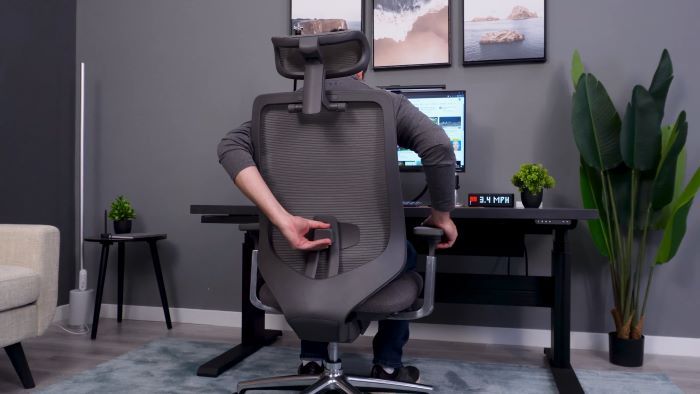
Although the lumbar support is made of hard plastic without padding, I don’t find it uncomfortably aggressive. The design of the backrest and frame allows for good range of motion as well.
The mesh has good elasticity, allowing you to sink into it a bit and it nicely contours to your back. One potential downside of the mesh is that it can be a bit coarse, like the Vera. This type of mesh tends to snag on clothing, like wool sweaters. Despite this, I think they did a nice job with this backrest and I think most people will like it.
4. Headrest Highlights
Additionally, the headrest is another positive with the Atlas. Many times, adding a headrest to a chair in this price range can be detrimental. Often, they are cheaply made and don’t provide much benefit, but that’s not the case with the Atlas. It has 2-way adjustment and both are easy to use and most importantly, they hold their position. The headrest features the same mesh as the backrest, so it not only matches but is a consistent theme of high quality from the bottom to the top of the chair.

5. Armrest Appreciation
Following the trend of being surprisingly good, especially for a chair that’s under $300. The arm pads themselves are pretty decent. Nothing that will wow you, but still offer some softness to them and I find them to be comfortable. I also like the shape. They just have a basic rectangle shape, with a flat top and rounded corners. In general, this design should work for almost anyone using the chair.
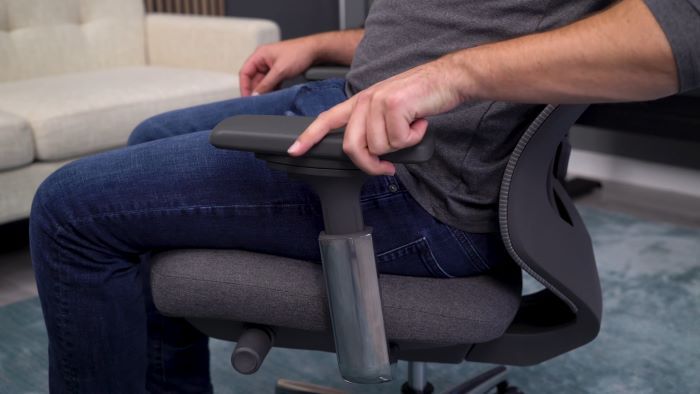
The added bonus is the 4-way adjustment feature, which is nice for a chair under $300. The ranges are actually quite generous. My only gripe is that the depth adjustment does not work when you recline. So many chairs make this mistake. They position the arms too far forward to start. When you recline, a gap forms between the arm and your backrest which widens as you lean back. Unfortunately, the arm depth adjustment doesn’t fix this because of the initial position of the arm.
6. Relaxing Recline
Lastly is the recline feature. This is another area where I think Colamy got it right. I was very impressed with the adjustments. The tension dial is just like the seat depth dial, but on the other side of the seat. Most tension adjustments, especially in this price range, are hard to reach, the knob is difficult to adjust, and it requires dozens of turns to see a difference. However, the Atlas stands out with its easy to reach and easy to turn adjustments. Just a few turns make a noticeable change.
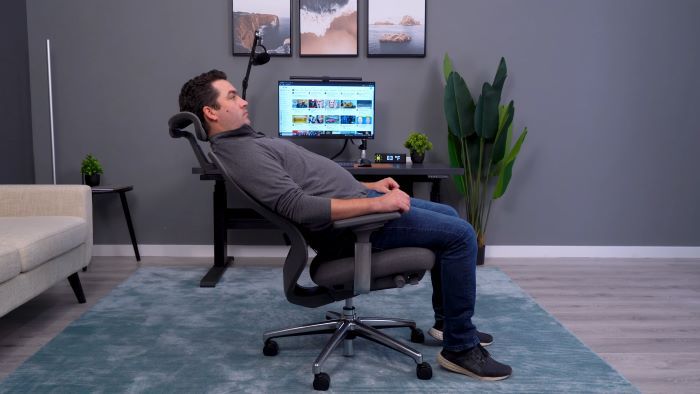
I also like the back lock adjustments for the same reasons. Many chairs have tilt lock systems that are tough to reach and tricky to engage. The little lever on the Atlas is easy to reach and clicks right into place. This makes it simple to choose between the different back stop positions. The recline action itself is also nice. Colamy went with a synchro tilt recline and it tilts back significantly. The movement is smooth and feels natural without any force during the whole range.
Bottom Line
Ultimately, buying a cheaper chair will always have some downsides and the Atlas is not immune to that. While there are a few things that I would change if I could, this chair gives the most for your money compared to others I’ve reviewed. I can see this being my top pick for the best chair under $300 for a long time.





